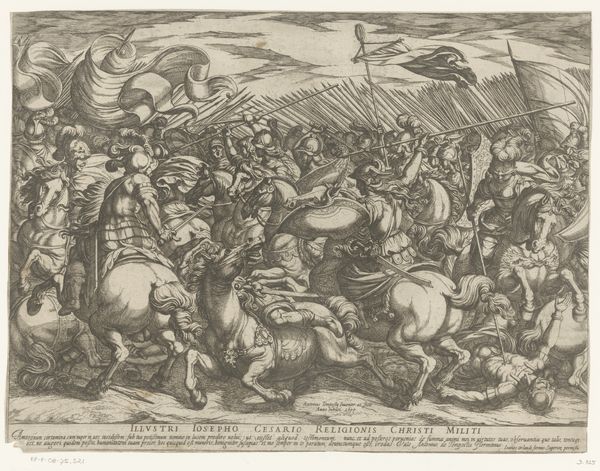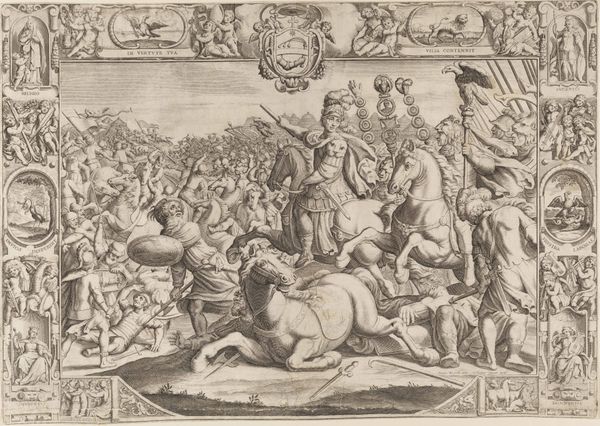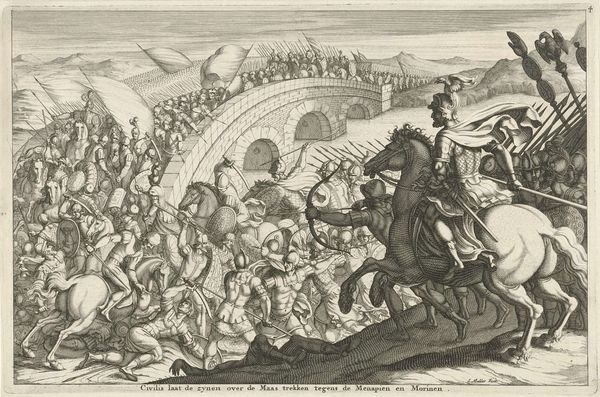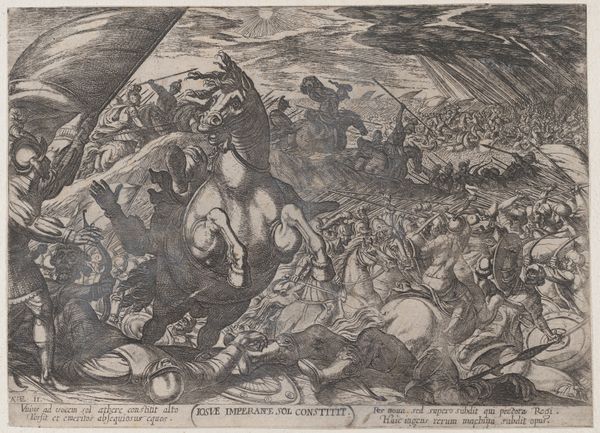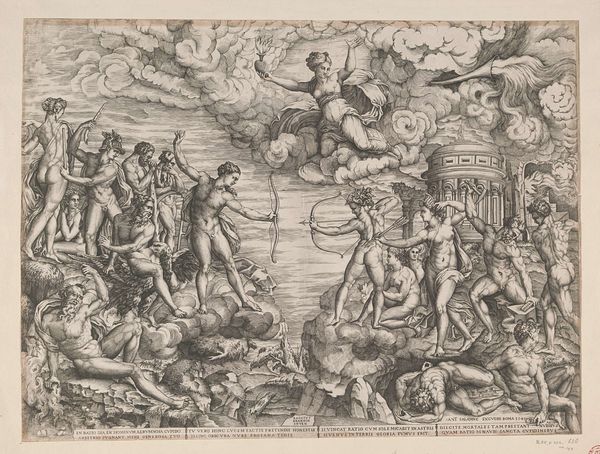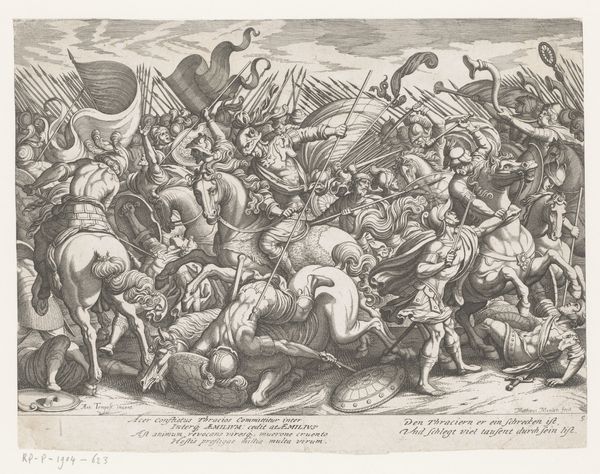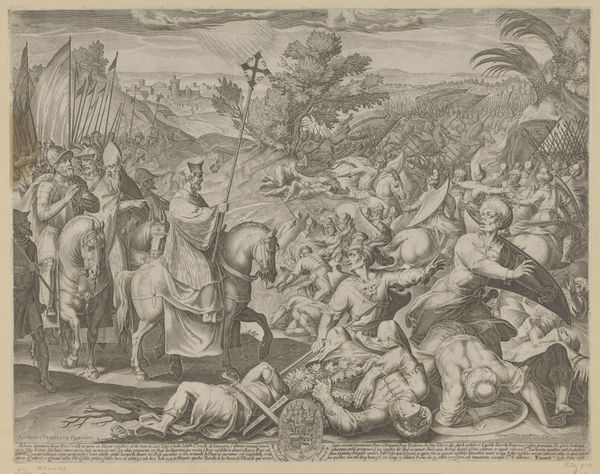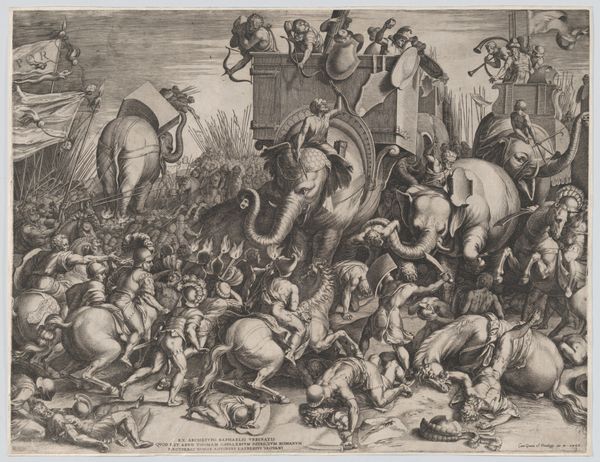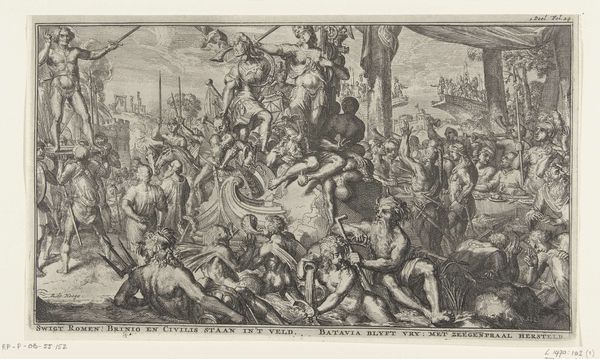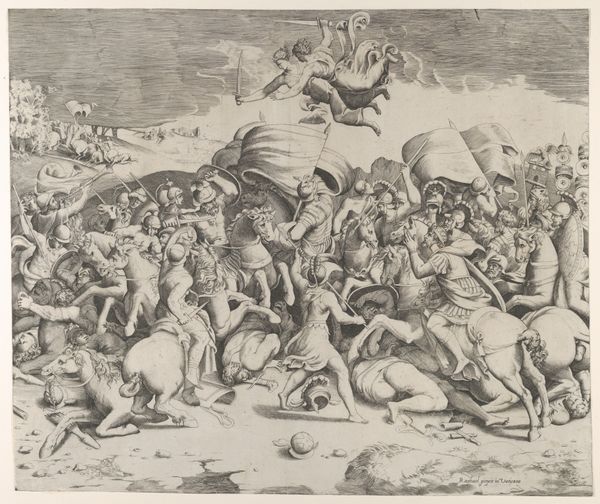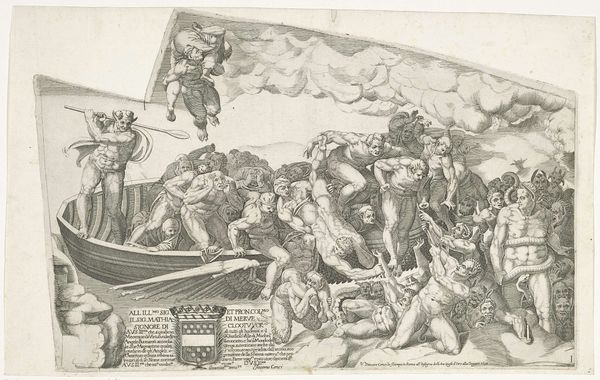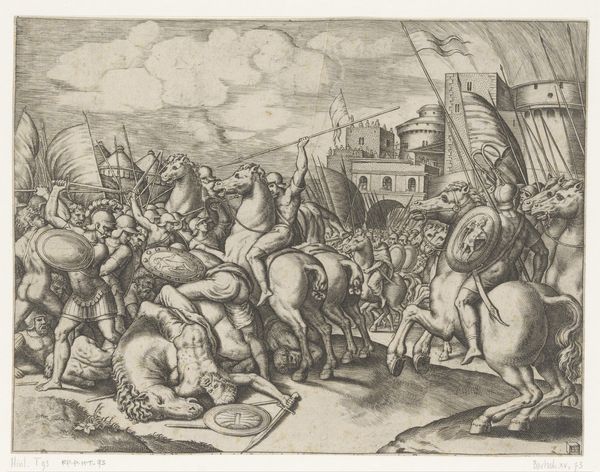
#
light pencil work
#
pen drawing
#
pen sketch
#
pencil sketch
#
junji ito style
#
ink drawing experimentation
#
pen-ink sketch
#
pen work
#
tattoo art
#
pencil art
Dimensions: height 360 mm, width 479 mm
Copyright: Rijks Museum: Open Domain
Francesco Villamena made this print, the Battle of Gaugamela, with etching and engraving, sometime around the turn of the 17th century. The image depicts Alexander the Great’s decisive victory over Darius of Persia in 331 BC, though it's less concerned with historical accuracy than with glorifying military might. Consider the context: Rome, a papal state, was then a center for the production and dissemination of art. The print medium allowed artists like Villamena to circulate imagery widely, shaping public opinion and reinforcing the power of the Church. The eagle and putti at the top are not ancient symbols, but emblems of divine favor, suggesting that Alexander’s victory was divinely ordained and, by extension, that Rome's military power had a similar source. The image thus comments on the social structures of its own time. By studying sources such as military history, religious iconography, and printmaking techniques, we can better understand how artworks like this reflect and shape the cultural landscape of their time. Art's meaning is contingent on its social and institutional context.
Comments
No comments
Be the first to comment and join the conversation on the ultimate creative platform.
